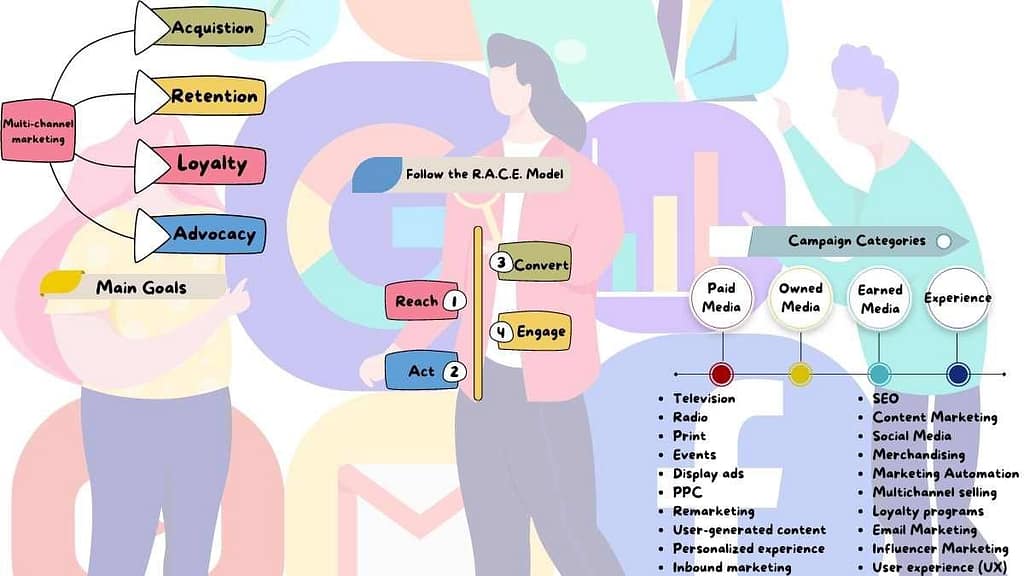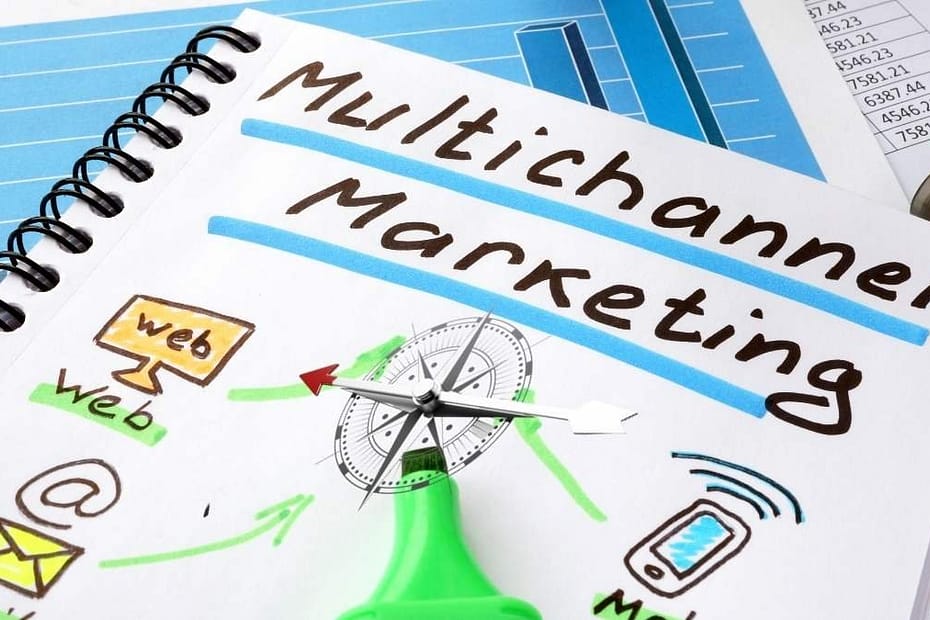Multi-channel marketing is a marketing strategy that focuses on using multiple channels to reach out to the customers to create a more cohesive experience. It allows companies to use various digital, TV, print, radio, and events channels to reach their audience.
The concept of multi-channel marketing is not new. It has been around for more than a decade. However, with the emergence of social media, mobile and IoT devices, and the internet, it has become much more important than ever before.
Consumers like multi-channel marketing because it enables them to access their favorite brands and content from their preferred devices and platforms. Marketing professionals love it because it allows them to reach their target audience in several different ways.
Multi-channel marketing aims to increase customer engagement across all channels and improve the customer experience. In this context, the four basic dimensions of multi-channel marketing are customer acquisition, customer retention, loyalty, and advocacy.
The major objective of multi-channel marketing is to convert leads into customers by using multiple channels simultaneously to provide a comprehensive experience for the target audience or buyer.
Table of Contents
Why Choose a Multi-Channel Marketing Strategy for Your Online Business?
A multi-channel marketing strategy is the best way to increase your sales conversion rate. The more channels you use, the more chances you have of converting a potential customer into a paying customer.
Think of each channel as a different kind of touch point. The more touch points you have, the higher your conversion rates will be.
Let’s say you have a business that makes custom pillows. If you choose to only advertise or promote your product on Instagram, you’ll be unable to reach out to a wider audience. But what if, in addition to social media, you also start promoting your “custom pillows” via newspaper, radio, and PPC ads? It’s as clear as it can be – the more platforms (touchpoints) you use, the higher the chances of attracting (and converting) new customers.
Everyone sleeps; everyone needs pillows to sleep. Your company’s custom pillows can be a hit with thousands of customers, but they will need to first realize that such a product exists. And how will they know about it?
Only when you share the word across multiple platforms!
How to Choose The Right Multi-Channel Marketing Campaign For Your Business?
It is important to note that not all channels are created equal. For example, email marketing and social media marketing are two vastly different channels with different conversion rates. Email marketing is time-intensive and usually requires a lead to be sold for the campaign. On the other hand, social media marketing can be done on an as-needed basis without much set-up or lead generation costs. The size of your audience on each channel will also determine which is best for your business.
“The best campaign mix for your business will focus on branding and awareness. It’s important to remember that a good campaign mix relies heavily on consistent marketing efforts.”
Some channels complement each other, and some don’t. Let’s reconsider the custom pillow example. For starters, you need to decide if you want to build a customer-focused campaign or a product-focused campaign.
Do you want to build an online presence, or do you want to deepen the customer experience?
Identify the touchpoints between your brand and your target audience and optimize them for the convenience of your customers. Most importantly, combine different channels to generate more opportunities throughout the customer journey.
For instance, if you want to build an online presence and a community for your “custom pillows”, you can try a mix of social media marketing and email marketing. Your end goal, in this case, will be to gather as many followers and subscribers as possible. So, the content you will push through these platforms will persuade the customer to join your page/group, subscribe to your newsletters, and do other similar things.
Learn how content clusters can complement your multi-channel marketing strategy.
You can even try the campaign mix of running PPC ads and running ads on TV, radio, and newspapers. In this case, the goal is customer acquisition and conversion. To achieve this, you’ll need to ensure that customers can access your sales page with whichever device they want. Hence, you’ll also need to optimize your touchpoints to make it extremely convenient for interested customers to check out.
You can even mix and match a variety of channels and strategies – there’s no limit here!
“The best campaign mix will always include a tested combination of marketing tactics and platforms because they are all effective in their own right and complement each other well.”
Check out this guide on what to include in your multi-channel marketing plan.

Creating Your Multi-Channel Marketing Campaign
To create the right multi-channel marketing campaign for your business, you must first know what marketing strategy you want to follow. A successful multi-channel marketing strategy will have a variety of campaigns that are tailored specifically to the needs and goals of your business.
The first step in creating an effective multi-channel marketing campaign is to identify the channels you want to use in your campaign. The channels you choose should be based on what type of audience you are targeting and what kind of message you want them to hear.
Your marketing channels should be appropriate for each audience to ensure your message is successfully delivered. After identifying the marketing channels, you can create your campaign around multiple channels.
For example, suppose you want to run a campaign to raise awareness and get new customers. In that case, you might focus on only one or two of your social media platforms. However, if you want to grow your community and sell more products, you might create campaigns that use multiple channels.
To create effective multi-channel marketing campaigns, you should consider the following factors:
- Different channels serve different audiences
- Different channels have different reaches and budgetary costs
- Different channels require different content
For example, one channel might be more effective for engaging with people already familiar with your company. In contrast, another channel might be more effective for gaining new customers.
The types of media you choose will typically depend on the channel. For example, suppose your company has a blog (i.e., focuses on content marketing). In that case, you might want to include an email marketing campaign. If you sell through a website, you might use Facebook and Twitter to help spread the word. You might also consider other media types relevant to your company’s target audience, such as print or digital ads.
The following are some of the key points to keep in mind when launching a multi-channel campaign:
- Create a clear and concise message for each channel
- Create a cohesive brand identity for each channel
- Test your campaign mixes before launch
- Optimize all existing (and new) customer touchpoints
- Monitor your campaign performance regularly
- Keep your strategy flexible enough to adapt according to customer’s needs
Summary
Multi-channel marketing is a complex process that requires diligent research, planning and implementation. However, it can be highly rewarding for your business if done correctly.
The benefits of multi-channel marketing are numerous and include:
- The ability to reach customers in different ways.
- The ability to communicate with customers on their preferred channels.
- The ability to measure ROI for each channel
- The ability to increase customer engagement, conversion, and retention rates
- The ability to lower your customer acquisition costs
- The ability to drive targeted content to your best customers
- The ability to provide a long-lasting and fulfilling customer experience.

